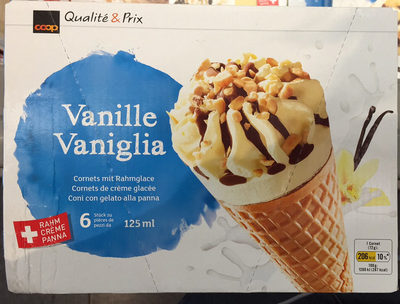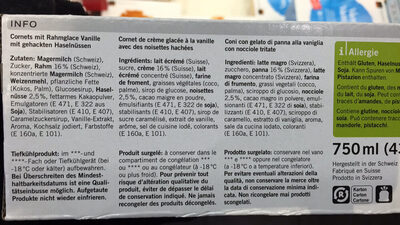Cornets de crème glacée - Coop - 750 ml
This product page is not complete. You can help to complete it by editing it and adding more data from the photos we have, or by taking more photos using the app for Android or iPhone/iPad. Thank you!
×
Barcode: 7610807148015 (EAN / EAN-13)
Quantity: 750 ml
Packaging: Cardboard
Brands: Coop
Labels, certifications, awards: Contains gluten, Made in Swiss, fr:Qualite-prix-coop
Origin of ingredients: Switzerland
Manufacturing or processing places: Suisse
Traceability code: CH-2406
Link to the product page on the official site of the producer: http://www.coop.ch
Stores: Coop
Countries where sold: Switzerland
Matching with your preferences
Environment
Packaging
Transportation
Report a problem
Data sources
Product added on by openfood-ch-import
Last edit of product page on by packbot.
Product page also edited by autorotate-bot, foodrepo, hungergames, kiliweb, roboto-app, sergei, teolemon, yuka.Wll3c0M3Z0YrdlF6eE04SDVqNy84SW9wNjRDRUJXK3dHK000SUE9PQ.








